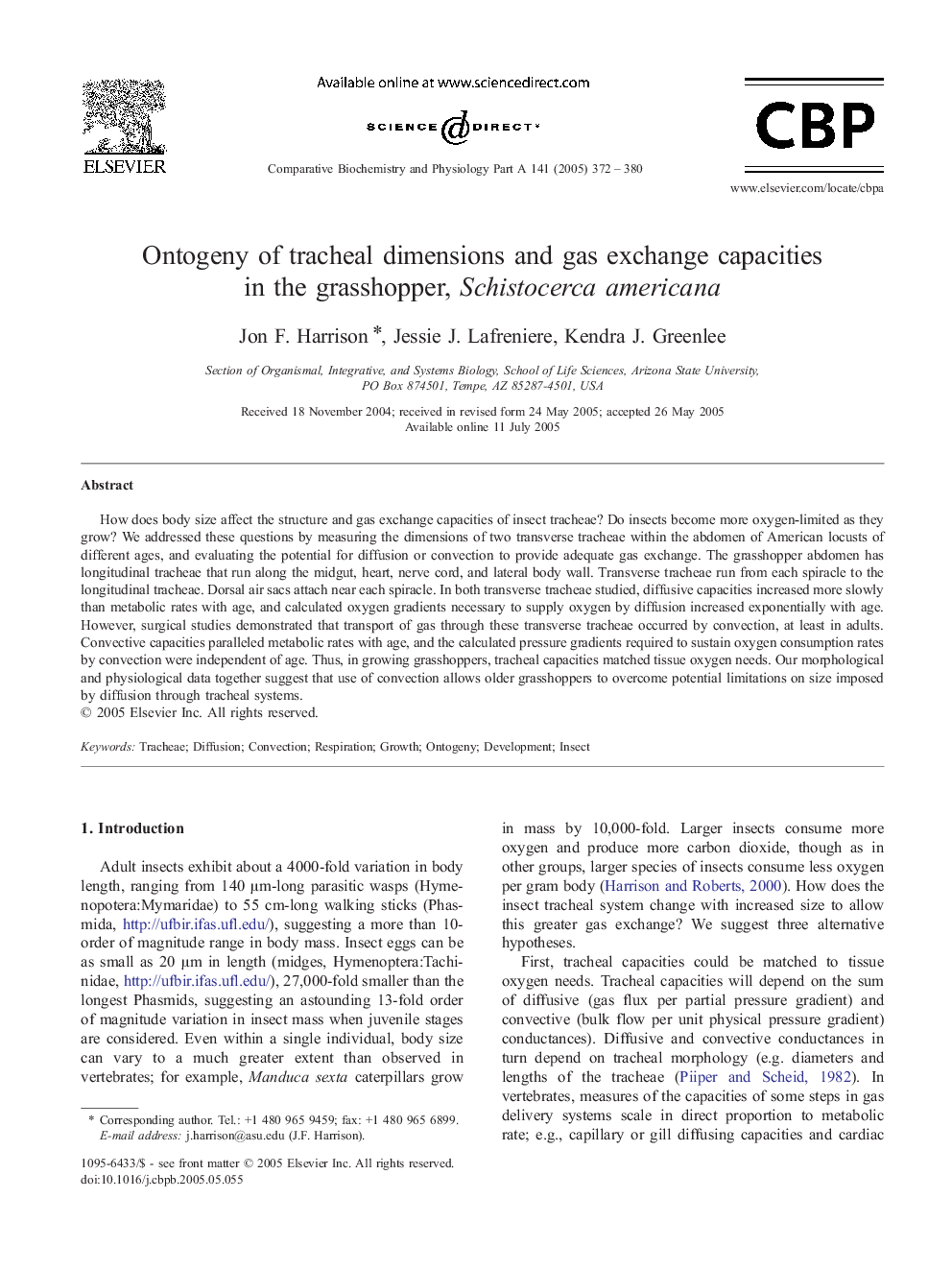| Article ID | Journal | Published Year | Pages | File Type |
|---|---|---|---|---|
| 10819385 | Comparative Biochemistry and Physiology Part A: Molecular & Integrative Physiology | 2005 | 9 Pages |
Abstract
How does body size affect the structure and gas exchange capacities of insect tracheae? Do insects become more oxygen-limited as they grow? We addressed these questions by measuring the dimensions of two transverse tracheae within the abdomen of American locusts of different ages, and evaluating the potential for diffusion or convection to provide adequate gas exchange. The grasshopper abdomen has longitudinal tracheae that run along the midgut, heart, nerve cord, and lateral body wall. Transverse tracheae run from each spiracle to the longitudinal tracheae. Dorsal air sacs attach near each spiracle. In both transverse tracheae studied, diffusive capacities increased more slowly than metabolic rates with age, and calculated oxygen gradients necessary to supply oxygen by diffusion increased exponentially with age. However, surgical studies demonstrated that transport of gas through these transverse tracheae occurred by convection, at least in adults. Convective capacities paralleled metabolic rates with age, and the calculated pressure gradients required to sustain oxygen consumption rates by convection were independent of age. Thus, in growing grasshoppers, tracheal capacities matched tissue oxygen needs. Our morphological and physiological data together suggest that use of convection allows older grasshoppers to overcome potential limitations on size imposed by diffusion through tracheal systems.
Related Topics
Life Sciences
Biochemistry, Genetics and Molecular Biology
Biochemistry
Authors
Jon F. Harrison, Jessie J. Lafreniere, Kendra J. Greenlee,
